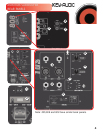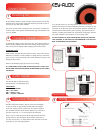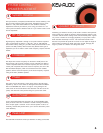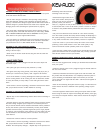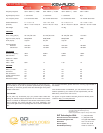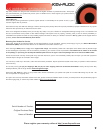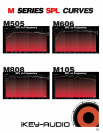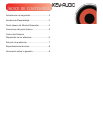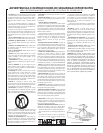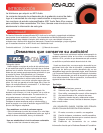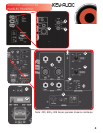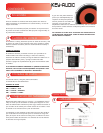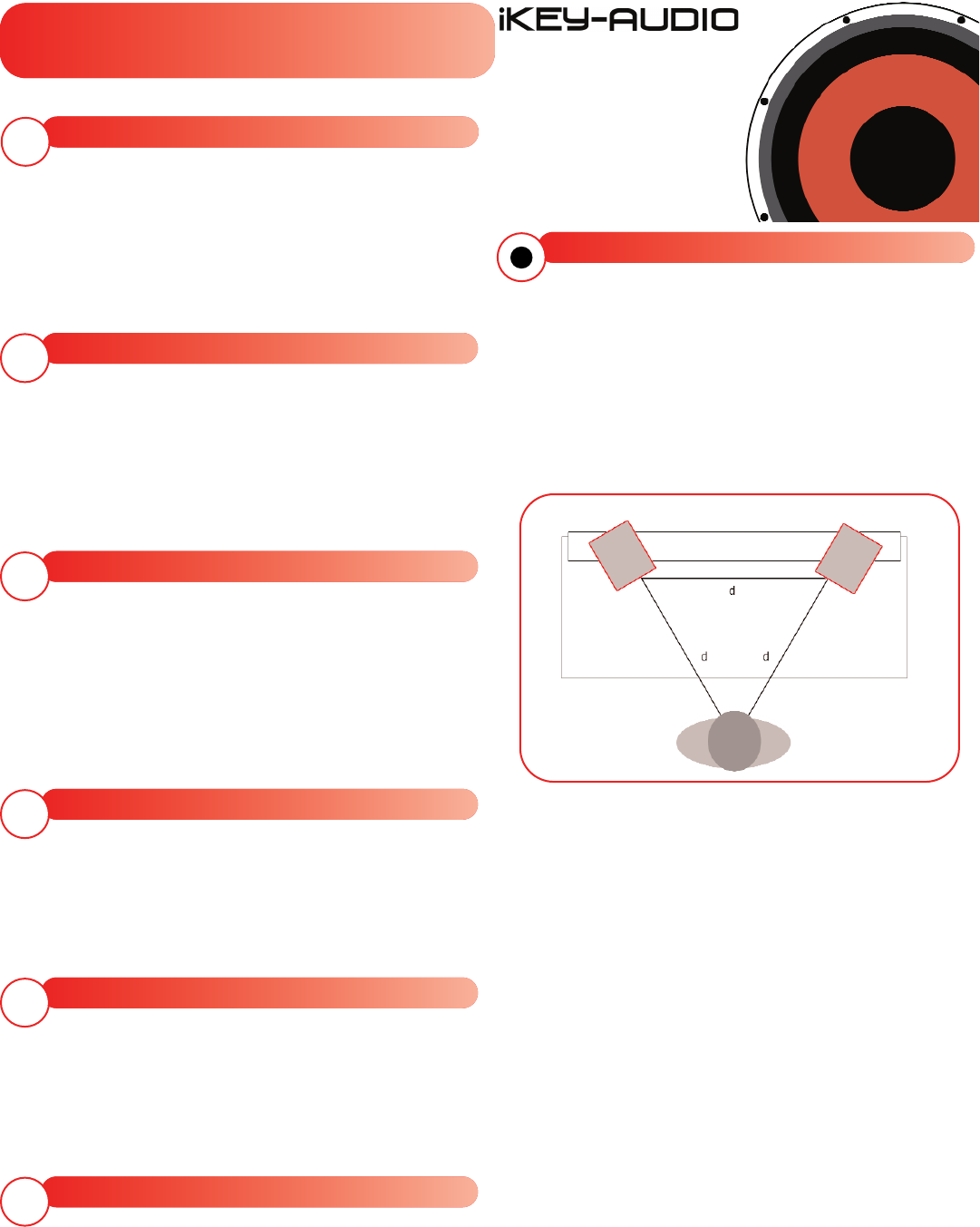
SYSTEM CONTROL/
SPEAKER PLACEMENT
The input sensitivity is adjusted (counterclockwise reduces sensitivity) with
the rear panel mounted system gain control. Adjustment range is from -
80db to + 6db, which should suffice for most conditions. Normally
adjustments would only be made if you’re using your monitor in a sur-
round system and need to balance levels or if your monitor send is to hot
and not adjustable.
High Frequency Adjustment is through a rear panel mounted 4-position
rotary switch. Range of control is +1db, flat, -1db, or -2db Shelving
above 2khz. Factory setting for your iKEY Audio powered Monitor is flat
(switch is the 0db position). Room acoustics may dictate which type of
adjustment you nee to make to retain a flat frequency response from the
monitor.
This adjusts the crossover frequency for the built-in 24db/octave vari-
able crossover. The crossover frequency can be adjusted from 50Hz to
110Hz. Frequencies below the crossover frequency are sent to the sub-
woofer, and frequencies above the crossover frequency are sent to the
LEFT and RIGHT OUTputs, which are connected to the main satellite
speakers. Set the crossover frequency to the lowest frequency response
rating of the main /Satellite speakers.
This switch reverses the polarity of the signal going to the subwoofer
amplifier by 180 . It has no effect on the signal at the LEFT and RIGHT
OUT or the MASTER OUT. There is no right or wrong setting for this
switch. Listen to the overall blend of the subwoofer with the rest of the
system, and select the switch position that gives you the best sound.
If set to the AUTO position the subwoofer will go into STANDBY mode
(mute) if Idle for more than 45 minutes it resumes working immediately
after an input signal is received. If set to the ON position it will be on
constantly, and the OFF position allows you to use the subwoofers power
switch Manually.
The Peak LEDwill illuminate if the input channels are being overloaded.
Positioning your monitors correctly in the studio is critical to their perform-
ance.Typically, they should be placed so that the listening position is fully
“covered” with all monitors resting on the same horizontal plane. A great
way to test a monitor for its imaging capability is to play back a CD or
DVD recorded acoustically in stereo . We recommend acoustic music
because it represents the spectrum of sound. You can adjust the angle of
each monitor by listening for dead spots. keep in mind, changing the
angle or position of a monitor will change the sound.
System Volume
6
HF Adjustment
7
Crossover
8
Phase
9
Auto Power
10
Peak LED
11
Speaker Placement
6







